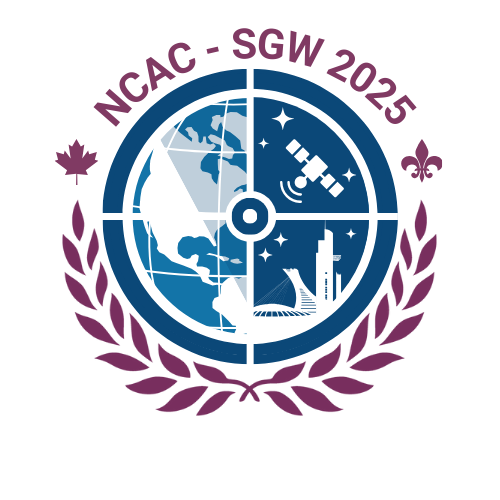Samuel Looper and Rushanka Amrutkar
Space Technology for Disaster Management Project Group
The most devastating natural disaster in Canadian history in terms of physical damage happened in 2016 when a series of wildfires engulfed the community of Fort McMurray in northern Alberta. These fires, which were sparked in the dry boreal forests surrounding the area, spread to the town as a result of late detection, poor monitoring, and ineffective containment. Since 1990, forest fires across Canada have consumed an average of 2.5 million hectares of land per year. The adverse impacts of wildfires in Canada disproportionately affect northern and Indigenous communities. Without accurate information on current wildfire risks, and the analytics required to model and monitor wildfires, communities across Canada will be prone to natural disaster and economic upheaval. As forest fires increase in many regions across the world, the consensus among scientists is that climate change is playing a significant but poorly understood role in these worrying trends.
For the past several months our team at the University of Toronto Aerospace Team’s Space Policy Division has been advocating for the utilization of space technologies to enhance the information at the disposal of first responders and environmental researchers to monitor and manage wildfires in Canada. Our team is reaching out to members in the Canadian government & Canadian Space Agency, as well as institutes such as the Canadian Science Policy Center, to promote a proposal we published in August 2018 on wildfire disaster management through the Canadian space program.
Currently the Canadian Space Agency has limited involvement in current wildfire monitoring practices in Canada. Natural Resources Canada currently runs the Canadian Wildland Fire Information System, as a central information hub on wildfires. It relies on satellites such as NASA’s Geostationary Operational Environmental Satellite (GOES) and the European Space Agency’s Sentinel Constellation to identify thermal signatures corresponding to wildfires and for hyperspectral imaging and biofuel distributions maps used in assessing wildfire risk. This database is run without any input from the Canadian Space Agency, which does not possess the space assets required to collect its own data.
Our policy proposal to the Canadian government centered around the need to build the necessary Earth observation infrastructure and expertise to improve on the existing uses of space technology for wildfire monitoring and management. We advocate for the creation of a programme within the Canadian Space Agency similar to the Indian Space Research Organization’s Disaster Management Programme, with a mandate to fund earth observation & disaster management research, develop and operate Canadian space technologies for disaster management, and coordinate with relevant Canadian federal agencies for disaster management operations. Other key recommendations included putting disaster management under federal jurisdiction to ensure underserved northern and indigenous communities would be included in studies and monitoring efforts, as well as leveraging Canadian expertise in machine learning and data analytics to improve wildfire predictive models.
Elsewhere around the world, First Nations and local governments are involved in collaborative efforts for disaster risk reduction and management. The UN member states adopted The Hyogo Framework (2005- 2015) and Sendai Framework for Disaster Risk Reduction (2015-2030) to make the world safer from natural hazards with the commitment of international collaborations. The UN is also creating a shared information platform for the exploitation of space technology for disaster management and mitigation throughout the world. In the United States, NASA’s Land, Atmosphere Near real-time Capability for EOS (Earth Observing System) (LANCE) is actively engaged in providing near-real time satellite data in less than 3 hours from American and European satellites. They have also built the Earth Science Disasters Program, which provides available resources to convey latest information for decision making for evacuations to supply routes and recovery estimates during disasters. NASA space-based programs like Fire Information for Resource Management System (FIRMS), Visible Infrared Imaging Radiometer Suite (VIIRS), US Forest Service Active Fire Mapping, the same services used by the Canadian government, are actively and effectively engaged in wildfire detection and distribution on a global level.
The Canadian proposal drew inspiration from the Indian Space Research Organisation (ISRO)’s National remote sensing centre (NRSC), which is involved in disseminating satellite data, supported by government organizations such as the Decision Support Centre (DSC) under Disaster Management Support Programme (DMSP). In addition, the DSC offers space-based data internationally, through forums like the International Charter on Space and Major Disasters, Sentinel Asia. Locally, the National Database for Emergency Management (NDEM) public portal is hosted on ISRO Bhuvan platform has a GIS-based repository for disaster management. The ISRO’s disaster management programmes have effectively leveraged mobile based platforms to disseminate information to government and civilians for better decision making in natural disaster situations across the board, through geo-tagging and integration with the NDEM database. Finally, the ISRO has also encouraged student satellite initiative like the Pratham microsatellite team from the Indian Institute of Technology Bombay to build their national expertise. Coming from a student design team in Canada such an initiative would be very welcome in Canada as well.
This advocacy effort is the largest and highest profile issue our Space Policy division is currently involved in, and as efforts to raise awareness for the potential of space technologies for wildfire monitoring have developed we are constantly learning about how to improve our strategies and approaches to advocacy in space policy. We have leveraged the press and have had articles published in news outlets such as the Commercial Space Blog and Space Quarterly, and have policy conferences such as the Canadian Science Policy Conference. This has given us visibility and a clear series of talking points to approach members of government and discuss the implications of the policy we are proposing. Our proposal was also showcased as a finalist for the Under 35 Youth Excellence Award from the Canadian Science Policy Center, which has additionally raised the profile of our advocacy efforts. Nonetheless affecting change in government is a gradual process, and we will continue our commitment to this issue in Canada as many others have around the world with the hope that Canada will be better prepared to manage natural disasters by leveraging space technologies.


